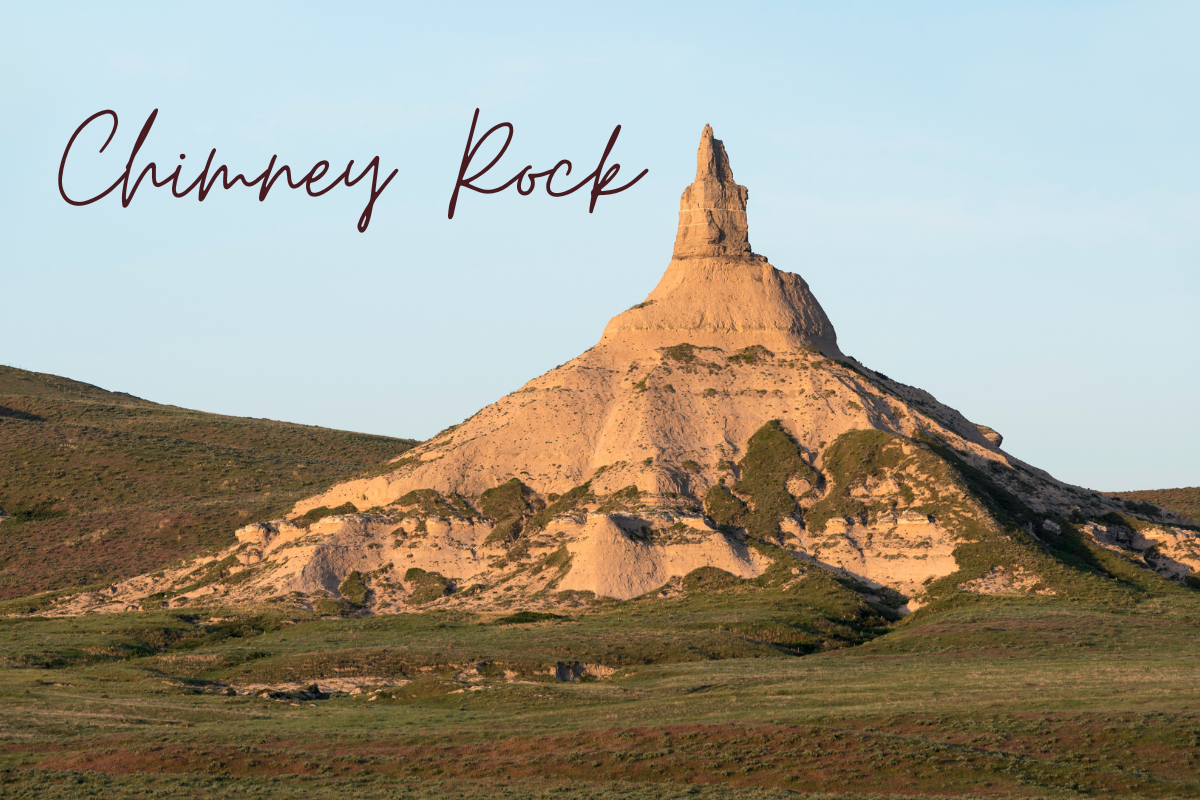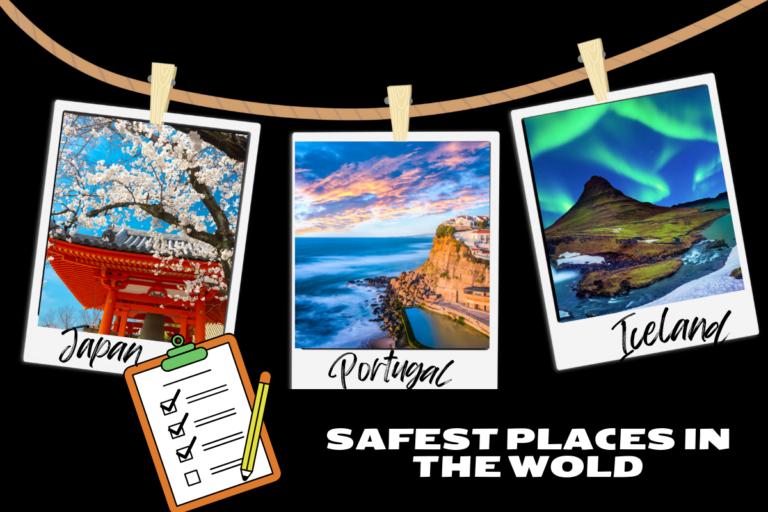Chimney Rock: A Geological and Cultural Marvel
Are you ready to uncover Chimney Rock, a hidden gem in Nebraska’s wild landscape? It’s a paradise for adventurers and history buffs alike and offers a breathtaking blend of natural beauty and historic charm.
Witness the impressive Chimney Rock, where nature’s design and history come together, creating a stunning mix of rock formations. Let’s explore the area around Chimney Rock and enjoy its stunning natural beauty and rich history.
This article explores facts about Chimney Rock, tips for a smooth visit, the best accommodations and top restaurants nearby, closeby attractions, and adventurous activities.
What Is Chimney Rock and Where It Stands?
Chimney Rock is a stunning natural landmark in western Nebraska, U.S., showing off the beauty of the American landscape. Its unique shape, geological history, and historical significance make it a fascinating place to learn about and admire.
Chimney Rock rises high above the plains with its tall, chimney-like shape. Wind and water erosion formed it millions of years ago from layers of sedimentary rock, shaping it into the unique feature we see today. This natural process has created a monument that tells the story of Earth’s history.
(Source: Rock National Monument Update)
Tips For A Smooth Visit
1. Check Hours and Admission Fees: Verify the park’s opening hours and entry fees in advance.
2. Weather Conditions: Check the weather forecast, as conditions can affect visibility and accessibility.
3. Clothing and Footwear: Wear comfortable shoes for hiking and dress in layers, as temperatures can vary.
4. Safety Guidelines: Follow safety guidelines, especially on trails and lookout points.
5. Park Map: Obtain a park map to navigate trails and attractions easily.
6. Water and Snacks: Bring water and snacks since the park may have limited amenities.
7. Park Rules: Adhere to park rules regarding wildlife, litter, and designated areas.
8. Accessibility: Note that some areas may have limited accessibility for those with mobility issues.
9. Parking: Plan for parking, as the lot can fill up quickly during peak times.
10. Time Management: Allocate enough time to explore the trails, attractions, and views.
Stay & Dine Near Chimney Rock
| Accommodation | Distance | Restaurant | Distance |
| The Chimney Rock Inn and Cottages | 0.8 km | Riverwatch Bar & Grill | 0.4 km |
| Geneva Riverside Lodging and Tiki Bar and Grill | 0.8 km | Stagecoach Pizza Kitchen | 0.4 km |
| The 1927 Lake Lure Inn and Spa | 2.0 km | Old Rock Cafe | 0.3 km |
| Broad River Inn | 0.4 km | Chimney Rock Smokehouse | 0.3 km |
| Evening Shade River Lodge and Cabin | 1.2 km | Bayou Billy’s | 0.6 km |
| The Esmeraldo Inn & Restaurant | 1.9 km | The Highlands Kitchen & Bar | 0.4 km |
| The Lodge on Lake Lure | 9.4 km | La Montaña Mexican Restaurant | 0.3 km |
| Hickory falls Inn | 1.1 km | Broad River Inn | 0.4 km |
Nearby Gems to Explore
| Name of Destination | Distance from Chimney Rock | Attraction Points |
| Chimney Rock State Park | 0.1 miles | Explore the park’s trails, rock formations, and views from Chimney Rock. |
| Lake Lure | 3.2 miles | Enjoy swimming, boating, fishing, and scenic views at this picturesque lake. |
| Rumbling Bald Mountain | 2.2 miles | This mountain offers climbing routes, hiking trails, and great views. |
| The Garden of Eden | 0.1 miles | A nearby nature preserve with scenic trails ideal for hiking and nature walks. |
| Carl Sandburg Home National Historic Site | 21 miles | Visit Carl Sandburg’s former home to tour the house and explore the grounds. |
| The Right Track Toy Train Museum | 2 miles | A large collection of model and toy trains |
| Bearwallow Mountain | 11 miles | A popular hiking spot with stunning summit views and local wildlife. |
| Flat Rock Playhouse | 20 miles | Enjoy live plays and musicals at this regional theatre. |
| Hickory Nut Falls | 0.6 miles | A beautiful waterfall in Chimney Rock State Park, reachable by a scenic trail. |
| Black Mountain College Museum + Arts Center | 31 miles | Located in Asheville, this museum showcases the history and impact of Black Mountain College and its artistic legacy. |
Hill Formation And Unique Traits
- Chimney Rock is a tall hill, known as a butte. It stands out on the rolling plains of the Sandhills region in western Nebraska. It has a high, spire-like peak that looks like a chimney, which is how it got its name.
- This natural wonder rises about 300 feet above the land around it and clearly shows how erosion shapes sedimentary rock formations. Let’s dig deeper into its formation.
- Sedimentary rocks like sandstone, siltstone, and claystone mainly make up Chimney Rock. Ancient seas and rivers laid down these materials millions of years ago during the late Miocene Epoch.
- As time passed by, these sediments were pressed together and hardened into rock. Because these sedimentary rocks are soft, they eroded easily, which helped shape Chimney Rock’s unique form.
- Lastly, wind and water erosion have shaped Chimney Rock into its current form. In simple terms, the process started with the erosion of softer rock layers, leaving behind the harder, more resistant layers that make up the butte’s tall spire.
- One interesting fact about it is that this process is still happening today, but much more slowly than in the past.
Historical Significance
- If we talk about the history of Chimney Rock, it played an important role in American history, especially in the 19th century. It became one of the most recognisable landmarks as pioneers and settlers travelled west on the Oregon Trail, California Trail, and Pony Express routes. It became a crucial navigational aid and a symbol of progress for travellers on their difficult journey.
- For many emigrants, seeing this magnificent rock was a moment of relief and encouragement. It marked a significant milestone in their journey across the vast and often challenging terrain of the American West.
- Chimney Rock’s role in westward expansion is well-recorded in historical documents, diaries, and letters from pioneers. These accounts often describe the emotional impact of seeing the landmark, emphasising its significance as a symbol of hope and endurance.
- While the landmark became an important navigational point for many, the landmark’s importance went beyond just being a navigational aid.
- Chimney Rock also appeared in historical accounts, paintings, and later photographs, solidifying its role in the history of American exploration and settlement.
Cultural and Indigenous Significance
- While Chimney Rock was an important part of American history, its importance extends beyond it. It holds deep cultural and spiritual significance for Indigenous peoples who have long lived in the region.
- For centuries, it said that the Chimney Rock has been a key part of Native American traditions and stories, symbolizing their connection to the land and the natural world.
- Among the Plains tribes, including the Lakota Sioux, Chimney Rock is regarded as a sacred site. It plays a significant role in their oral histories and spiritual beliefs, highlighting the deep connection between Indigenous peoples and their environment.
- For many Indigenous cultures, it is more than just a physical landmark; it represents their cultural identity and spiritual heritage.
- The site is often featured in ceremonies and rituals, highlighting its continued significance in the lives of local Native American communities.
Preservation and Protection Efforts
- In 1956, the National Park Service designated Chimney Rock as a National Historic Site, ensuring that its significance would be protected and recognized.
- Being named a National Historic Site has led to many efforts to protect it from damage and other dangers. Some of these efforts include regular upkeep, controlling visitor access, and doing research to understand and meet the site’s needs.
- One of the important parts of protecting Chimney Rock is managing the effects of tourism. While it’s important to let people visit for learning and enjoyment, it can also harm the site. To balance access and protection, steps have been taken like creating special viewing areas, putting up barriers, and offering programs to teach visitors about the site’s importance and why it needs to be preserved.
- Working together is very important for protecting it. The National Park Service, local groups, and community members team up to make sure resources are used well and the site is cared for properly.
- Educational programs and displays are very important for protecting Chimney Rock. They give visitors information about its history, cultural importance, and role in westward expansion. By teaching people about the site, these programs help visitors appreciate it more and encourage them to take care of the landmark.
Visitor Experience and Activities
- Chimney Rock attracts visitors from all over the world who want to see its natural beauty and learn about its history and culture. Since it is a spot of attraction. The National Historic Site offers facilities and activities like visitor centres, guided tours, and scenic viewpoints.
- The Chimney Rock Visitor Center is a main attraction for visitors. It has educational exhibits and information about the rock’s history and importance. There are interactive displays, historical artefacts, and multimedia presentations that show how Chimney Rock was formed and its role in westward expansion.
- Travellers who want to learn about Chimney Rock in detail can take guided tours. Experienced guides lead these tours, explaining the rock’s geological features, historical background, and cultural importance. These tours offer a great opportunity to learn more about Chimney Rock and its role in American history.
- For outdoor enthusiasts, the area around it has scenic trails and viewpoints. Hiking paths let visitors explore the natural landscape and enjoy great views of the Sandhills region. These trails are made to be easy for people of all ages and abilities, so everyone can appreciate the beauty of Chimney Rock and its surroundings.
- Chimney Rock also has visitor amenities like picnic areas, restrooms, and educational programs for all ages. These facilities and programs make the visit more enjoyable and add to the site’s educational and recreational value.
The Future of Chimney Rock
- Looking ahead, keeping Chimney Rock safe and well-managed will stay very important. It’s crucial to keep protecting it from environmental and human damage for its long-term survival.
- Working together with government agencies, local communities, and conservation groups will be key to preserving this famous landmark.
- Moreover, educational programs will keep being a big part of preservation efforts. By helping people understand Chimney Rock’s history, culture, and geology, we can encourage visitors and future generations to take care of the site.
Final Thoughts
Chimney Rock is a strong example of nature’s power and human history. Its impressive geology, historical importance, and cultural value make it a cherished landmark and a source of inspiration.
FAQs
1. Why is Chimney Rock famous?
– Chimney Rock is famous because:
- Geological Feature: Iconic spire-shaped butte in western Nebraska.
- Pioneering Landmark: Important navigational aid on the Oregon and California Trails.
- Cultural Significance: Sacred site for Indigenous peoples, including the Lakota Sioux.
- Historical Designation: Recognized as a National Historic Site since 1956.
- Tourist Attraction: Popular for its natural beauty and educational value.
2. How many steps is Chimney Rock?
– It doesn’t have a set number of steps because it is a natural geological formation rather than a man-made structure.
3. How is Chimney Rock formed?
– It is formed through a combination of geological processes, primarily erosion. Here is how it was formed:
- Sedimentation: Ancient seas and rivers deposited layers of sediment.
- Rock Formation: Sediments compacted into sedimentary rocks.
- Erosion: Wind and water eroded softer rock layers, exposing harder rock.
- Shaping: Selective erosion created the iconic spire-like shape.
4. Does it cost money to go to Chimney Rock?
– Yes, there is an entrance fee to visit Chimney Rock National Historic Site. As of the latest information, the fee is:
- Adults (ages 16 and up): $10 per person
- Children (ages 15 and under): Free







